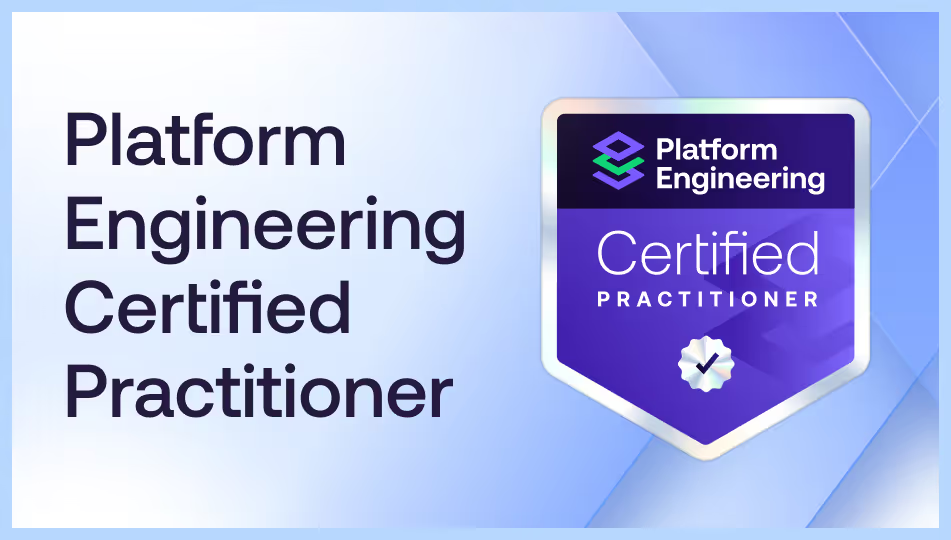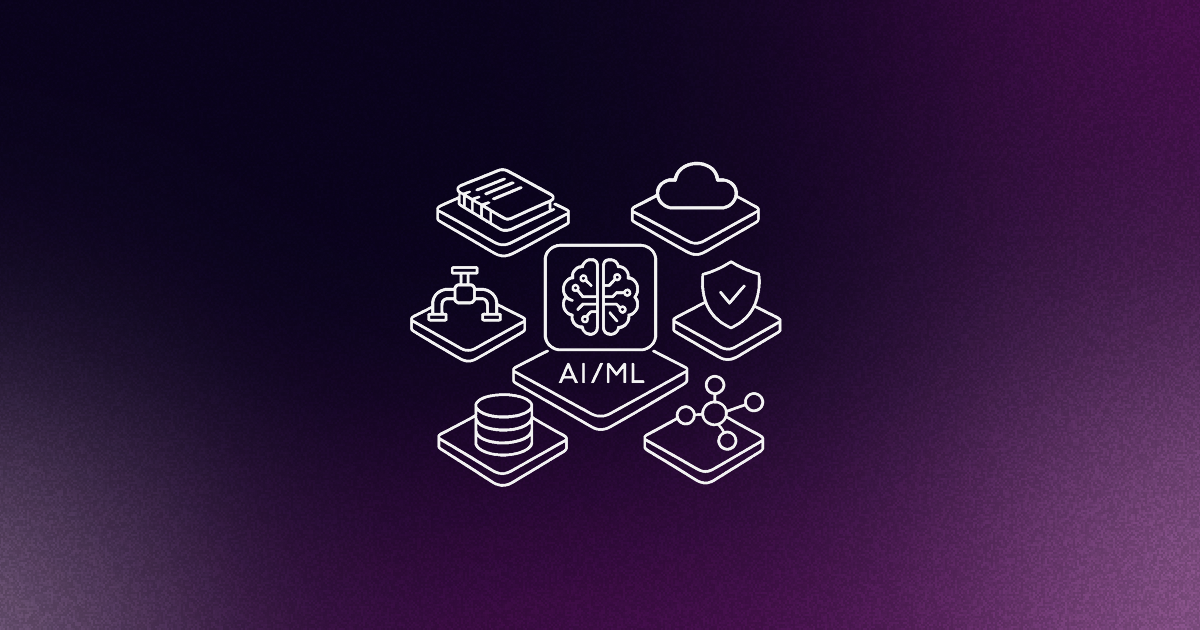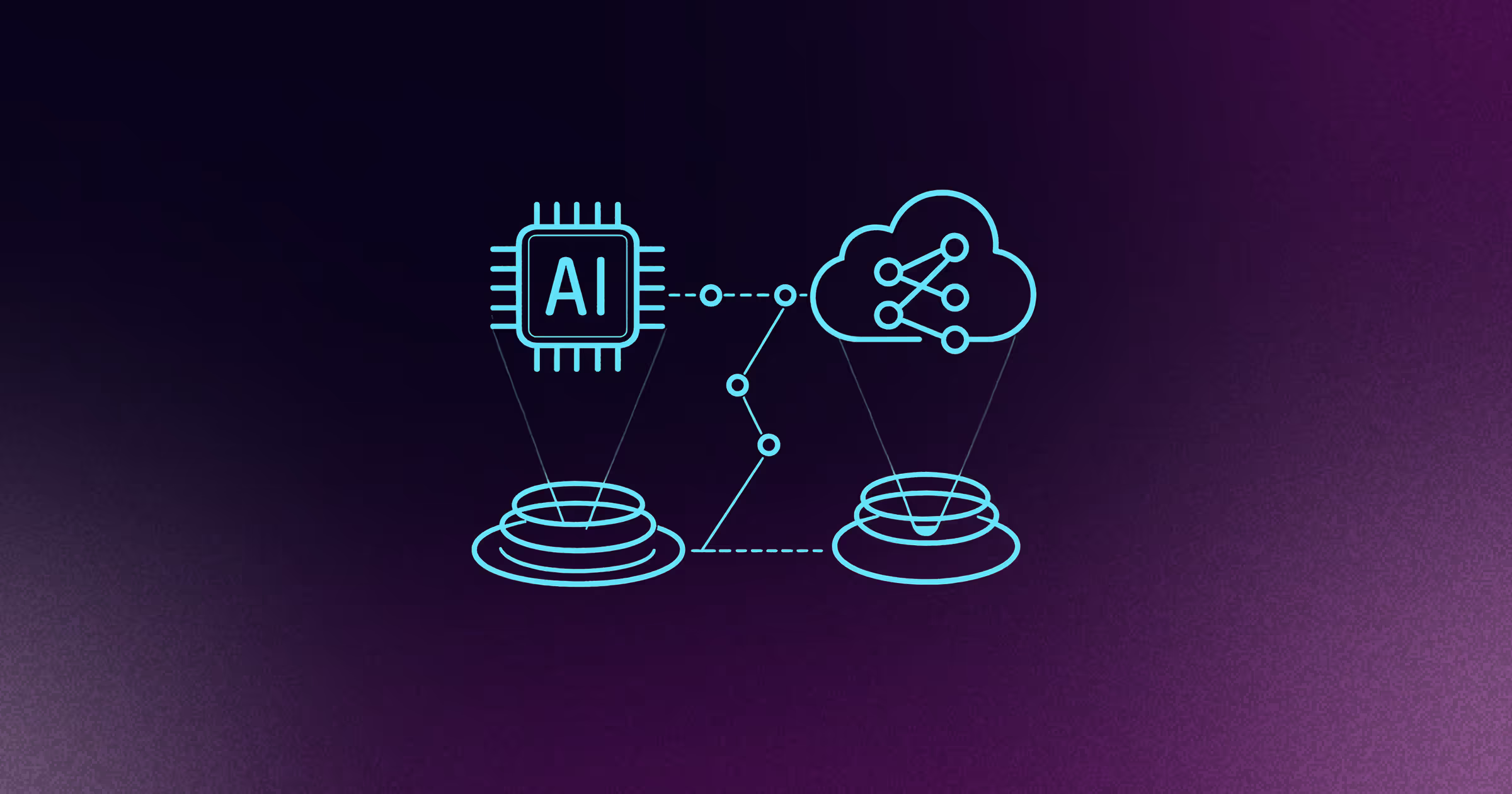HashiCorp's license change in August 2023 forced platform teams to reconsider their infrastructure-as-code foundations. Out of the ashes, OpenTofu emerged as the community's response - a fork that returned to open-source principles under the Linux Foundation.Since then, both Terraform and OpenTofu have been recognized by enterprise orgs for their infrastructure automation and orchestration capabilities, validating that this isn't just a technical fork, but an important strategic decision point.
But the question to ask in choosing one of these tools isn’t about feature parity. In reality, both tools provision infrastructure. The real question to ask is how each aligns with your platform engineering strategy, governance requirements, and long-term risk tolerance. This guide cuts through the noise to help you make an informed decision.
What is Terraform?
Terraform is HashiCorp's infrastructure-as-code tool that lets you define and provision infrastructure using declarative configuration files. Since its 2014 release, it has become the de facto standard for multi-cloud infrastructure automation, supporting hundreds of providers across AWS, Azure, Google Cloud, and beyond. Platform teams use Terraform to codify infrastructure, version control their environments, and automate provisioning workflows.
What is OpenTofu?
OpenTofu is an open-source fork of Terraform, created in response to HashiCorp's 2023 license change. Governed by the Linux Foundation with a Technical Steering Committee drawn from multiple organizations, OpenTofu maintains command-line compatibility with Terraform while returning to a Mozilla Public License 2.0. The project aims to provide a truly open-source alternative with community-driven governance and no single vendor control.
Why the fork happened and why it matters
In August 2023, HashiCorp changed Terraform's license from the Mozilla Public License 2.0 (MPL) to the Business Source License (BSL). The shift restricted commercial use and redistribution, triggering immediate concern across platform teams and third-party vendors that had built critical systems and infrastructure on what they believed was truly open-source software.
The community response was swift. Within weeks, major cloud providers, infrastructure vendors, and individual contributors formed the OpenTofu initiative. By September 2023, the Linux Foundation adopted the project, establishing neutral governance and returning the codebase to MPL 2.0.
What this means in practice: If your organization has an open-source program office (OSPO) or strict vendor neutrality requirements, the license change isn't just legal paperwork - in reality, it's a real governance risk. The Terraform vs OpenTofu decision should flow through your OSPO evaluation process, not just your platform team's technical assessment.
Core differences that actually matter
Licensing: MPL 2.0 vs BSL
OpenTofu uses MPL 2.0, the same license Terraform used before August 2023. You can use it commercially, modify it, and redistribute it without restriction. Terraform's BSL allows free use for most scenarios but restricts competitive offerings and certain commercial redistribution.
Enterprise risk assessment: BSL's "Additional Use Grant" expires after four years, at which point the code converts to MPL 2.0. For most platform teams, this means current Terraform usage is fine. The risk surfaces if you're building a commercial platform product, offering managed infrastructure services, or need to guarantee perpetual open-source access for compliance reasons.
Governance models and what they enable
OpenTofu operates under Linux Foundation governance with a Technical Steering Committee drawn from multiple organizations. Decisions happen in public, and contributions follow standard open-source processes. Conversely, HashiCorp controls Terraform's roadmap, prioritization, and contribution acceptance.
The practical difference: OpenTofu's governance model means no single vendor can unilaterally change the license again. For platform teams burned by the 2023 shift, this structural guarantee matters more than any technical feature.
State encryption: OpenTofu's security differentiator
OpenTofu ships with native state file encryption. You can encrypt state at rest without additional tooling or third-party backends. Terraform requires external solutions - encrypted S3 buckets, Terraform Cloud, or third-party state backends.
Why this matters: State files contain sensitive data - API keys, database passwords, infrastructure topology. Platform teams managing multi-tenant environments or operating under strict compliance regimes (HIPAA, SOC 2, PCI-DSS) need encryption by default, not as an add-on. OpenTofu's built-in encryption reduces your security surface area and simplifies golden paths implementations.
Provider ecosystem: Compatibility and divergence
Both tools use the same provider protocol. Most providers work identically across Terraform and OpenTofu today. The OpenTofu Registry mirrors Terraform's provider ecosystem while also hosting OpenTofu-specific providers.
The key insight: provider compatibility is strong now, but will diverge over time as each project evolves independently. Monitor your critical providers - if you rely on niche or vendor-specific providers, verify their OpenTofu support before migrating.
How this fits your platform engineering practice
Platform engineering is about building golden paths that make the right thing the easy thing. Both Terraform and OpenTofu can power your infrastructure layer, but the choice affects how you build abstractions on top.
GitOps integration patterns: Both tools integrate seamlessly with GitOps workflows. You can use ArgoCD, Flux, or Atlantis with either tool. Real-world implementations demonstrate Terraform driving infrastructure provisioning in GitOps pipelines - OpenTofu drops into the same pattern without modification.
Developer self-service and abstractions: Your platform abstractions - for example Backstage, Port, or Humanitec - can sit above the IaC layer. However, depending on how these abstractions integrate with IaC, the tool choice can influence implementation details and operational workflows. What matters most is consistency: pick one tool, standardize on it, and build your golden paths accordingly.
Multi-tenancy considerations: OpenTofu's state encryption provides a cleaner security model for multi-tenant platforms. If you're building vCluster-based environments or namespace-per-team architectures, encrypted state reduces the risk of credential leakage between tenants.
Migration path and organizational adoption
Technical migration: What actually changes
OpenTofu maintains command-line compatibility with Terraform. The commands terraform init, terraform plan, and terraform apply work identically. For most codebases, migration means:
- Replace the Terraform binary with OpenTofu
- Update CI/CD pipelines to use the new binary
- Migrate state files (OpenTofu provides migration tooling)
- Verify provider compatibility for your specific providers
State migration considerations: OpenTofu can read Terraform state files directly. The reverse isn't guaranteed - once you migrate to OpenTofu and use OpenTofu-specific features (like native encryption), rolling back becomes complex. Plan your migration as a one-way door.
Organizational change management
The technical migration is straightforward. The organizational challenge is harder. Your team has Terraform muscle memory. Your runbooks and standards reference Terraform commands. Your training materials assume Terraform.
Adoption strategy:
- Pilot with non-critical infrastructure: Test OpenTofu on development environments or new projects before migrating production workloads
- Update documentation in parallel: Rewrite runbooks and golden path documentation before the migration, not during it
- Plan for 2-4 week transition: Most teams need two weeks for technical migration and another two weeks for team adoption and troubleshooting
Rollback strategy: Maintain Terraform binaries and state backups for 30 days post-migration. If you discover provider incompatibilities or team friction, you can roll back cleanly within this window.
When to choose each tool
Choose Terraform if:
- You need HashiCorp's commercial support and enterprise features (Terraform Cloud, Sentinel policy-as-code)
- Your organization has deep HashiCorp ecosystem integration (Vault, Consul, Nomad)
- You're risk-averse and prefer the incumbent with the largest market share
- BSL licensing doesn't conflict with your business model or compliance requirements
Choose OpenTofu if:
- Your OSPO requires true open-source governance for critical infrastructure tooling
- You need built-in state encryption without additional infrastructure
- You want vendor neutrality and value community-driven development
- The 2023 license change created hard-to-mend organizational trust issues with HashiCorp
Strategic implications: Don’t make this choice lightly - this decision affects your entire platform stack. If you choose OpenTofu, you're betting on community governance and Linux Foundation stewardship. If you stay with Terraform, you're accepting vendor control in exchange for commercial support and ecosystem maturity. Neither choice is wrong - they optimize for different organizational priorities.
Frequently asked questions
Is OpenTofu completely compatible with existing Terraform code?
Yes, for most use cases. OpenTofu maintains command-line and HCL compatibility. Verify your specific providers before migrating production workloads.
What are the risks of staying with Terraform vs migrating to OpenTofu?
Terraform risks: potential future license changes, vendor lock-in. OpenTofu risks: smaller ecosystem, newer governance model, potential provider divergence over time.
How long does a typical Terraform to OpenTofu migration take?
Technical migration: 1-2 weeks for most organizations. Full team adoption and workflow adjustment: 2-4 weeks total.
Can I use both tools in the same organization?
Technically yes, but you should aim to avoid it. Running parallel IaC tools creates confusion, duplicates effort, and complicates your golden paths. Standardize on one.
Which tool has better long-term support and development?
Both have strong backing. Terraform has HashiCorp's commercial resources. OpenTofu has Linux Foundation governance and multi-vendor support. Long-term viability depends on your trust in vendor-controlled vs community-driven models.
Join the Platform Engineering community and connect with peers on Slack











